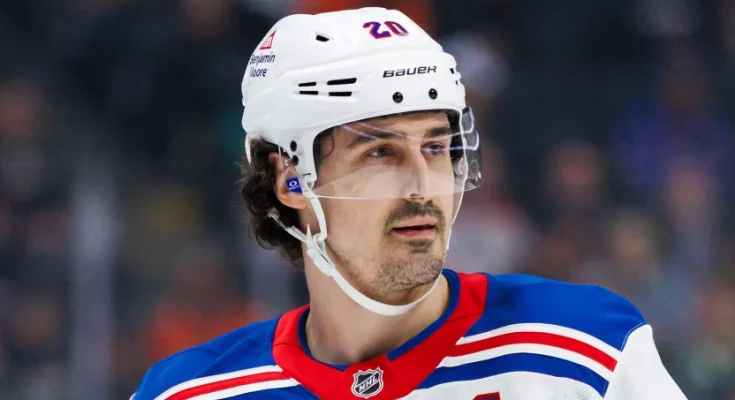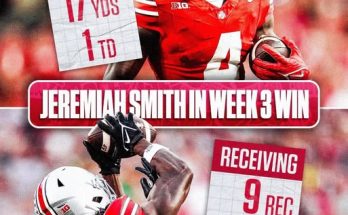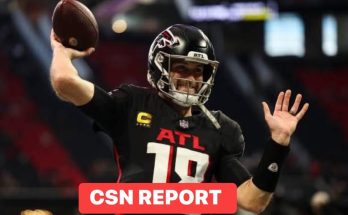The Anaheim Ducks are building something intriguing, and the addition of veteran forward Chris Kreider has only added to the optimism swirling around Orange County. The trade that brought Kreider over from the New York Rangers caught many off guard—after all, Kreider was not just a staple in Madison Square Garden but also a symbol of the Rangers’ resurgence over the last few years. His departure from New York signaled not only a major shakeup for the Blueshirts but also a massive endorsement of the Ducks’ belief that they are on the verge of turning the corner after seasons of rebuilding. What’s clear now is that Anaheim didn’t make this move for nostalgia or PR value. This was a strategic maneuver aimed at fortifying a young, talented roster with a proven, high-character leader who can produce on the ice and elevate everyone around him in the locker room.
Kreider, 33, brings with him a wealth of experience and a level of consistency that Anaheim has desperately needed. He’s scored 30 or more goals in three of the last four seasons, including a career-high 52 in 2021-22. Those numbers don’t just happen by accident. They’re the result of discipline, conditioning, hockey IQ, and a motor that doesn’t quit. Even in the latter stages of his career, Kreider remains one of the best net-front presences in the league—someone who makes a living off deflections, rebounds, and muscleing past defenders in the dirty areas of the ice. For a Ducks team that often struggled to finish chances last season, especially in tight games, this is a game-changer.
Ducks General Manager Pat Verbeek has remained relatively patient during this rebuild, but he’s always preached the importance of mixing young talent with veteran leadership. It’s why the Ducks previously added players like Alex Killorn and Radko Gudas—guys with playoff experience and gritty reputations. But Kreider represents a different caliber entirely. He’s not just a leader by presence or résumé; he’s a difference-maker who still has plenty of gas in the tank. And what makes this even more compelling is that Kreider didn’t land in Anaheim by accident. He reportedly waived his no-movement clause to make the trade happen, suggesting he sees something in the Ducks that others might be missing.
That “something” is beginning to take shape. The Ducks have one of the most exciting young cores in the league, led by forwards Trevor Zegras, Mason McTavish, and Leo Carlsson, along with defensemen Jamie Drysdale and Pavel Mintyukov. All of them are under 24. Adding Kreider to this mix is akin to adding a seasoned field general to a battalion of elite young soldiers. He doesn’t need to carry the team on his back—he just needs to lead by example, guide the next generation, and do what he’s always done: score goals and create chaos in the crease. In a locker room filled with up-and-coming stars who have yet to taste real success, Kreider’s playoff experience—107 career playoff games and multiple deep runs—will prove invaluable. He knows how to manage the grind of an 82-game season and how to elevate when the stakes get higher.
There’s also a cultural aspect to this move that shouldn’t be overlooked. For years, Anaheim has been searching for an identity since the departure of players like Ryan Getzlaf and Corey Perry, who defined the Ducks’ rough-and-tumble, hard-nosed style during their prime. Kreider, while not as pugilistic as those names, brings a similar physical edge and sense of accountability. He’s someone who won’t allow passengers on the bench or complacency in the locker room. In New York, he was seen as the emotional engine of the team, a player who would block shots, kill penalties, and engage physically without needing to be asked. The Ducks desperately need that DNA, especially if they want to evolve from a promising young team into a legitimate playoff threat.
The timing of the trade is also interesting when considering Anaheim’s broader trajectory. Last season was filled with flashes of brilliance but also maddening inconsistency. Injuries, growing pains, and lack of depth played their part, but the Ducks also lacked a true veteran who could help steady the ship during rough patches. Kreider fills that void and does so in a way that resonates with both the coaching staff and the players. His arrival allows the younger stars to be just that—stars—without the burden of having to lead prematurely. Zegras and Carlsson, in particular, can benefit from watching how Kreider prepares, how he trains, and how he manages his minutes throughout the year. That sort of osmosis can’t be measured on a stat sheet, but its long-term value is immense.
It’s no surprise then that head coach Greg Cronin has been positively beaming about Kreider’s addition, calling himself “very optimistic” about what this trade means for the team. Cronin, who enters his second year behind the Ducks’ bench, has already made clear that he expects the team to compete for a playoff spot this season. With Kreider now in the mix, that no longer feels like a pipe dream. It feels like a reasonable expectation. Not only because of the direct impact Kreider is likely to have, but also because of how his presence changes the expectations in the room. No more moral victories. No more “just learning experiences.” The Ducks are signaling that the training wheels are off.
For Kreider, this represents a fascinating new chapter. After more than a decade in New York, he now has a chance to become something even greater in Anaheim—a foundational piece for a franchise that’s on the verge of something special. There’s a unique satisfaction that comes with helping build something from the ground up, and Kreider, who has always relished a challenge, seems tailor-made for this task. There’s also less pressure in Anaheim compared to the relentless spotlight of New York. That freedom could very well unlock new dimensions of Kreider’s game, allowing him to play with more creativity and less worry about media narratives or organizational politics.
Moreover, Anaheim offers him a platform to make an impact off the ice as well. Kreider has long been known for his leadership in community initiatives, particularly around mental health and youth development. In a market like Anaheim, where the Ducks have strong ties to grassroots hockey and charitable causes, Kreider’s presence is likely to amplify those efforts in meaningful ways. That sort of engagement can galvanize a fanbase and foster deeper emotional investment in the team, especially among younger fans who now have a new role model to look up to.
Financially, the trade also makes sense for both parties. The Rangers shed some cap space that can be used for future flexibility while the Ducks, who had room to maneuver under the cap, didn’t hesitate to use it to acquire a high-character veteran with term left on his deal. Kreider isn’t a rental—he’s a commitment, and that speaks volumes about the Ducks’ belief that their window is opening, not closing. It also means Kreider gets the chance to truly embed himself into the team’s DNA, rather than merely serving as a short-term stopgap.
Looking ahead, the impact of this trade will be measured not just in wins and losses, but in how the Ducks mature throughout the season. If Zegras, Carlsson, and McTavish take the next steps in their development, much of it will be due to the environment fostered by players like Kreider. His influence won’t always show up on the stat sheet, but it will be felt in tighter forechecks, quicker puck decisions, and improved structure in both ends of the ice. It will also be evident in how the Ducks respond to adversity—whether they wilt or rise, push back or fade. In Kreider, they now have a player who will always choose the fight.
All told, this trade signals more than just a roster change—it’s a culture shift. It tells the rest of the league that Anaheim believes its time is now. That the era of rebuilding is over. That this team, once again, wants to be feared. Chris Kreider didn’t come to the Ducks to fade into obscurity or collect a paycheck. He came to compete, to win, and to teach a young core how to do both. And judging by the way the organization is talking, by the excitement percolating in the fanbase, and by the quiet confidence growing inside the room, he just might be the catalyst this franchise has been waiting for.



